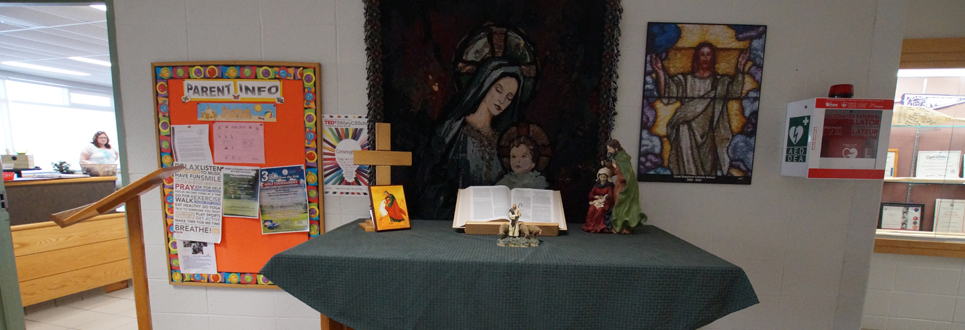
| Our School Prayer |
| Good Shepherd, We love you and praise you. Help us make the best decisions today. Let us be generous, kind, and respectful of all of God's creations. Jesus, thank you for the blessings of a good education. We are grateful for our friends, families, and community. Please enlighten us so that we have a deeper understanding of Your grace and follow in Your light. Amen. |
| DCDSB Safe, Caring, and Healthy Elementary Schools |
| The Durham Catholic District School Board recognizes that a school should be a place that promotes responsibility, respect, civility, and academic excellence in a safe learning and teaching environment. A positive school climate exists when all members of the school community feel safe, comfortable, and accepted. It is the responsibility of all the members of the school community to work together to create a positive learning environment where all members feel supported. |
| Access to Premises |
|
Parents/guardians are welcome to visit the school to discuss an issue with teachers or administrators. In keeping with the Board's Access to School Premises Policy, all doors will remain locked during school hours. Our Safe Welcome Program provides an intercom and camera at the main door of the school for all visitors to communicate with the office prior to entering the school. This enhances the safety of students and staff. Please remember that anyone coming into the school must first sign in at the office and obtain a Visitor's badge. (Parents/guardians are not allowed to access the school yard before school or during recesses and noon hour.) At recess time, the school yard is well supervised and staff will question anyone whose presence is not expected. Each member of staff is wearing photo ID and is identified on duty with a safety vest. If a parent/guardian needs to pick up his/her son/daughter during the school day, this must be facilitated at the office. Members of the office staff will call the student down to the office to be signed out. If parents send a friend/relative/designate to pick up their child, please advise the school in advance and ask the designate to provide photo identification at the office. If the student returns to school before dismissal, he/she must sign back in at the office so that his/her attendance can be monitored. |
| Make Every Day Count – Attendance Matters |
|
Attending school regularly helps children feel better about school–and themselves. Now is the time to start building this habit so your child learns right away that going to school on time, every day is important. Good attendance will help children go well in high school, college or university, and in the world of work. Did You Know? Absences can add up quickly. A child is considered chronically absent if he/she misses just two days every month!! Research Shows:
School success goes hand in hand with good attendance! What Can You Do:
|
| Safe Arrival – Automated Attendance |
|
In June 2018, the Durham Catholic District School Board adopted a new automated attendance system, called Safe Arrival, for reporting student absences. Safe Arrival reduces the time it takes to verify student attendance making it easier for you to report your child's absence and easier for staff to respond to unexplained student absences.
All three methods are available 24 hours a day, 7 days a week. Future absences, like doctor's appointments can be reported ahead of time. |
| Restorative Schools |
|
We believe that safety begins with positive connections between the students, staff, and parents. To foster these relationships, staff in the Durham Catholic District School Board use restorative practices, including classroom circles and small group conferences to build community within the classroom and the school. Restorative Practice is rooted in the same philosophical approach as Canada's Aboriginal communities. It rests on the belief that it is better to do things with people, rather than to them. When conflict arises, using restorative practices engages students in a fair process that responds to behaviours in ways that strengthen and repair the relationship. It is collaborative rather than adversarial in nature. The aim of restorative practices is to hold individuals accountable for their actions while restoring and repairing any relationships amongst each other and within the community that may have been harmed. Catholic Restorative Schools will:
|
| School Code of Conduct |
| Please click here to read the Code of Conduct. |
